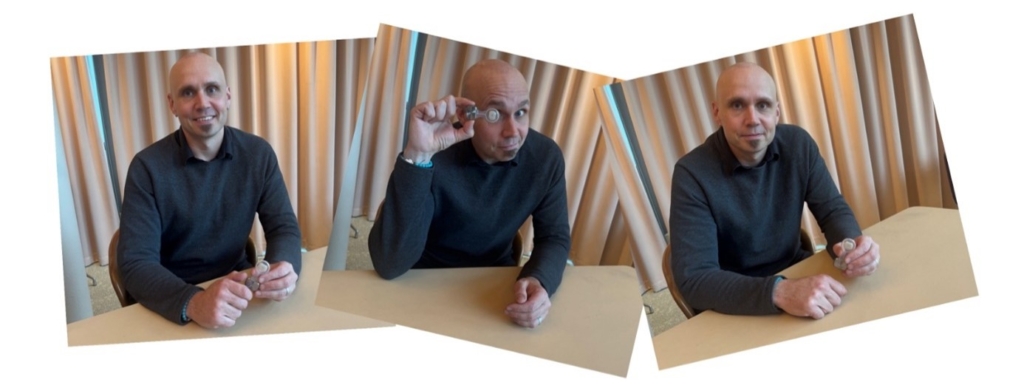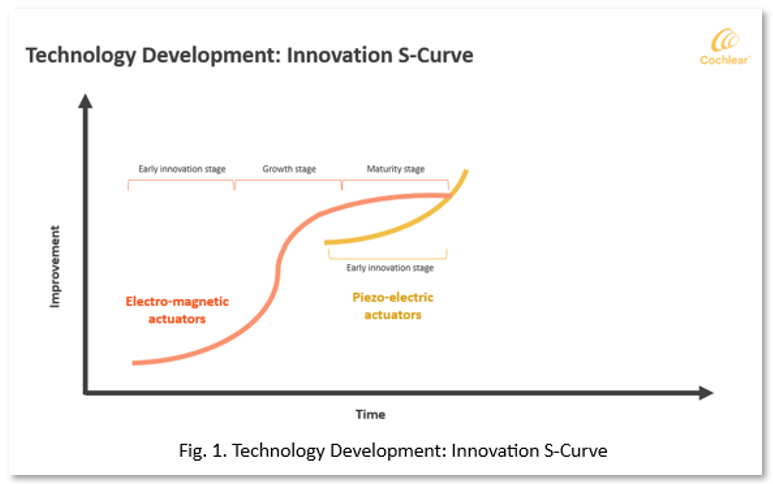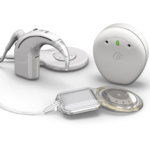We recently interviewed Henrik Fyrlund, Manager of Advanced Acoustics and the Acoustics Portfolio Lead at Cochlear, to debunk some common myths about active bone conduction systems by discussing the science behind the Cochlear™ Osia® System. Henrik holds a degree in mechanical engineering and acoustics from Chalmers University of Technology—also known as the birthplace of Baha® System technology. Since joining Cochlear in 2010, Henrik has held several leadership roles in Research & Development, contributing to core product development, technology innovation and manufacturing. He is also the holder of more than 15 international patents.

Q: Why is it so important for professionals and patients to understand the science behind the technology that drives the Osia System?
Henrik: With any implantable solution, it’s important that both patients and professionals understand the pros and cons of the options they are considering. By exploring the science behind the design of these systems, it becomes easier to grasp what each system can and cannot do—and, even more importantly, why.
Q: What makes the piezoelectric technology used by the Osia System different from traditional bone conduction systems?
Henrik: Other active systems use electromagnetic actuators, which can introduce additional challenges for recipients—especially when it comes to transmitting high-frequency sounds and undergoing MRI screenings. In contrast, the Osia System’s piezoelectric technology significantly reduces or even eliminates these limitations, thanks to its unique design and operating principles.
Q: Why was piezoelectric technology utilized for the Osia System, instead of electromagnetic technology?

Henrik: Ever since the first bone conduction systems in the 1970s, there has been investment in the development of electromagnetic actuators for use in bone conduction. It followed the standard Innovation-S Curve (fig. 1), starting with an innovation phase, then moving into a growth phase as the technology became more optimized. Now, electromagnetic transducer technology for bone conduction is in its maturity phase, which means it’s starting to reach its technological limit. The use of piezoelectric technology for bone conduction, however, is currently only at the beginning of its innovation phase. We can expect the technological design, manufacturability, material science and innovation to advance exponentially, offering better and better solutions for patients with each iteration. Patients already experience the superior benefits of this with the Osia System today, with its higher power in a slim design, increased access to high frequencies1 and access to more powerful MRI without the concern of damage to the implant2,3.
Q: How does security play a role in the Osia System?
Henrik: The Osia System uses a digital link. Since the signal for this digital link is encrypted, it cannot be accessed or disrupted, ensuring safe and secure transmission.4* Analog links, on the other hand, function like a radio antenna—open to external frequencies—which can create potential risks.
Q: Why does the Osia System use a digital link, instead of an analog link like other active systems?
Henrik: To enhance signal integrity and security, the Osia System followed in the footsteps of cochlear implants, which transitioned to digital transmission years ago. Knowing the importance of security to patients, we designed the Osia System to utilize this standard, ensuring access to premium sound quality and better user security.
Q: Why is a digital link better than an analog link for active bone conduction systems?
Henrik: The digital link in the Osia System is secure, stable and consistent.⁴* It ensures a securely encrypted signal transmission between the sound processor and the implant. The Osia System supports a coil-to-coil distance of up to 9 mm. Within this range, the digital link consistently delivers a high-quality, secure signal transmission.⁴* This helps preserve sound integrity and prevents interference.
In contrast, analog link technology relies on open, unencrypted protocols. Analog link technology can attenuate or distort the signal as the distance between the implant and the sound processor increases. This has critical design implications since patient hairstyles or weight can change and fluctuate as they grow and age – impacting the signal transmission distance, even if it stays within a manufacturers’ specified range.
A digital link, however, maintains secure and consistent performance within its specified range.⁴* While it’s true that digital transmission requires more power and battery life than analog systems, we believe this trade-off is essential to provide access to a stable, secure and high-quality sound experience for patients.
Q: How does the Osia System’s piezoelectric and digital link technology improve the user experience?
Henrik: With higher power output for clearer sound quality, piezoelectric systems help users hear more naturally especially in high frequencies.1 Additionally, the digital transmission ensures security, preventing external interference—a key advantage over analog systems.4*
Q: Why are piezoelectric and digital link technology the best choice for the future?
Henrik: With more high-frequency power1to enable better sound quality, secure transmission4and reliable long-term performance, 2,3,5 piezoelectric transducers and digital link signal transmission are critical to enabling continued innovation for bone conduction systems. Together, they offer better clarity, higher durability, and future-ready capabilities, making them the smart choice for bone conduction hearing technology today and beyond.
The Osia System represents a leap forward in bone conduction technology, combining the precision of piezoelectric innovation with the security of digital signal transmission. As Henrik Fyrlund explains, understanding the science behind these advancements empowers both professionals and patients to make informed decisions about hearing solutions. With its superior sound quality, MRI compatibility, and secure performance, the Osia System is not just a technological upgrade—it’s a future-ready solution.
Visit our website to learn more about how the Osia System is redefining bone conduction.
*Up to 9 mm skin flap thickness
D1991745-V1 Osia System R5 OSI300 Technical Brief
Bergman J. Piezo vs. Electromagnetic Actuators. Cochlear Limited, Sweden. 2021; D1826128
OSI300 1.5 T MRI Verification Summary Report. Cochlear Limited, Australia. 2023; D2084831
OSI300 3 T MRI Verification Summary Report. Cochlear Limited, Australia. 2023; D2084832
Cochlear Limited. D2043008 V2 2023-03. Design Verification Report Osia System R5


